The Good Sense of the Small Fire Pit
Life on the trail is incomplete without fire.
You can grouse all you want about campers and tents and argue as you will about the necessities of various equipment and elements of a base camp.
But there is one non-optional element nobody argues about: the campfire.
While nobody argues about the fire it gets complicated with “leave no trace” commitments on the trail. Burning, cooking and warming by a fire offroad is something that requires thought and planning.
The fire’s first purpose is food.
The off-grid life requires fuel for people and fuel comes in the form of protein. Most protein has to be cooked. And cooking is done by fire.
But hauling big stoves, tanks of propane and alternative fuels is not always advisable in areas away from water sources and fire-fighting equipment.
Safety has to be more than just a forethought.
That’s one small reason for Trail Trailer’s small portable fire pit.
In speaking with our own in-house overlanders the feedback was consistent: for a fire pit to be truly portable it needs to be small, light, easy to set-up, compact and stowable with the smallest possible footprint.
Fuel was a, well, hotly debated topic.
In the end, natural or easily transported fuel won out over tanks and cans of fuel.
In researching the broad assortment of “fire pits” out there we found lots of heavy equipment that was long on tanks, hoses, regulators and even apps.
For the purists among us it was all too much. Too complicated. Too fraught with dangers, risks and what-if’s for cooking on the trail.
Worse, it seems that many fire pit offerings out there are just a lot to lug offroad and run counter to the whole “leave no trace” directive.
In fact, the constant comment we heard was “make a stove that doesn’t require carrying fuel, but that can burn whatever fuel we can forage on the trail”.
And, in terms of actually using the thing, “keep it simple”.
With all that in mind our engineers fashioned this triangular-looking design that sits cone-shaped when put together.
It has no moving parts. No attachments whatsoever. It is simply styled and, we later learned, completely efficient.
One panel just attaches to the next, five total pieces in all which includes the optional grill.
Primitive? No. Functional? Yes.
Disassembled, the fire pit weighs just over two pounds and makes for flat storage when in its included canvas bag.
The bag is shaped to fit the panels – its flat, easy to handle and stores in the smallest of nooks and crannies.
In field testing this simple idea of a stove we had several worries:
Can it take the heat? The stainless steel panels might warp if used at high heat levels for hours on end.
They didn’t.
Lighting coals within the stove could prove problematic if air flow was not sufficient.
They didn’t.
The cone-shaped design coupled with well placed cut-ins with each panel provided a chimney-like updraft that got our coals going within 10 minutes.
The compact design also brought concerns of maintaining temperatures.
Sure enough, we loaded six coals to start our first fire but quickly learned we only needed three to do the job. Less is more.
By adjusting those coals down and supplementing the fire with available small twigs and dry wood we could not only control the heat but also the flavor of the meal.
The grill top was both a cooking grate and a warming zone.
It grilled the meat, heated up the beans and sustained the small kettle of water for hours.
The triangular design kept the two-pound grill rock steady as we added weight to the top of it.
In fact, we found only one thing critical in our first-use experience with the Trail Trailer fire pit: I turned my back for just a second and the dog found the height of the grill just right for him and I caught him picking up the steak in his mouth. So that first steak was his.
But with the second steak we had the benefit of knowing better what to do with the grill.
We made some minor adjustments and in ten minutes had a perfectly cooked steak featuring a nice char from our now-seasoned grill.
We stoked that little fire for about five hours before calling it a night.
Six hours later, when we got up in the morning, the stove was cold and ready to empty of its ashes and pack up.
We gave it a light cleaning before packing it just as it was when our outing began.
Later, when we got home and I examined things a little more closely, I was surprised to see how quickly a thorough clean with mild detergent restored the fire pit panels to near new condition.
It is ready for our next adventure with little evidence of the workout we gave it.
Speaking of evidence, there was no evidence at all of the place we used the stove. This was in a dispersed camping area without established fire rings or other amenities. We literally left no trace.
In fact, the leftover ash was fairly minimal.
I don’t know if that’s because our fuel-holding capacity was so small or just that we had a very efficient burn.
It was stunning to see so little leftover for what it produced in a night at camp.
We’re thrilled to take out this small fire pit again in a few weeks. We’re more confident in having used it and we’re going to take it to the next level by testing some small cast iron pans and Dutch oven cooking with it.
It’s small but mighty.
See posts like this in your email. Subscribe today!

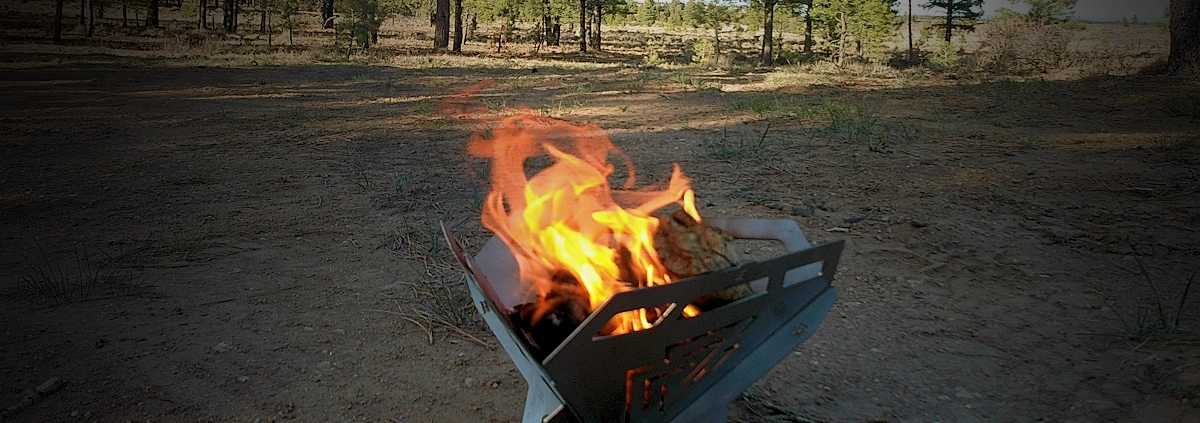
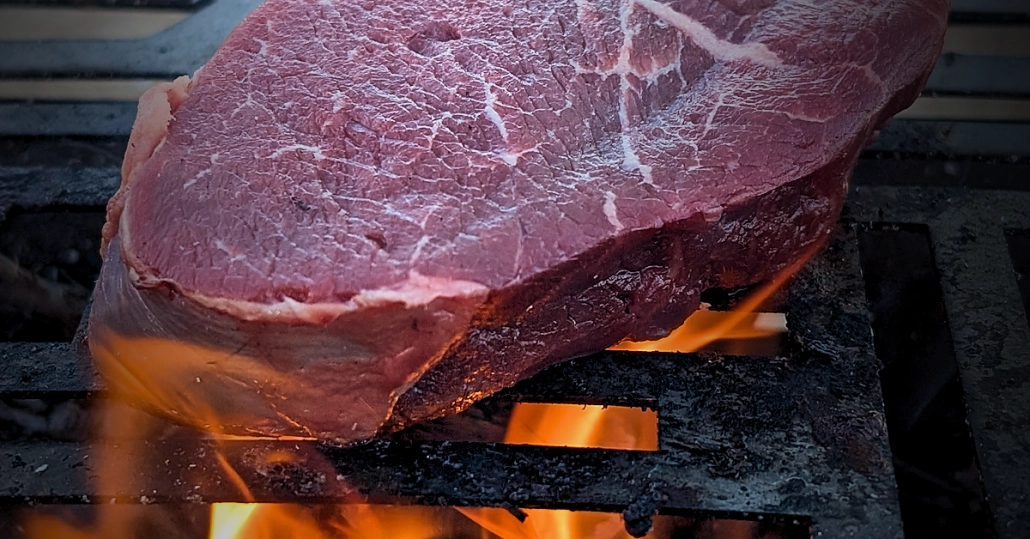
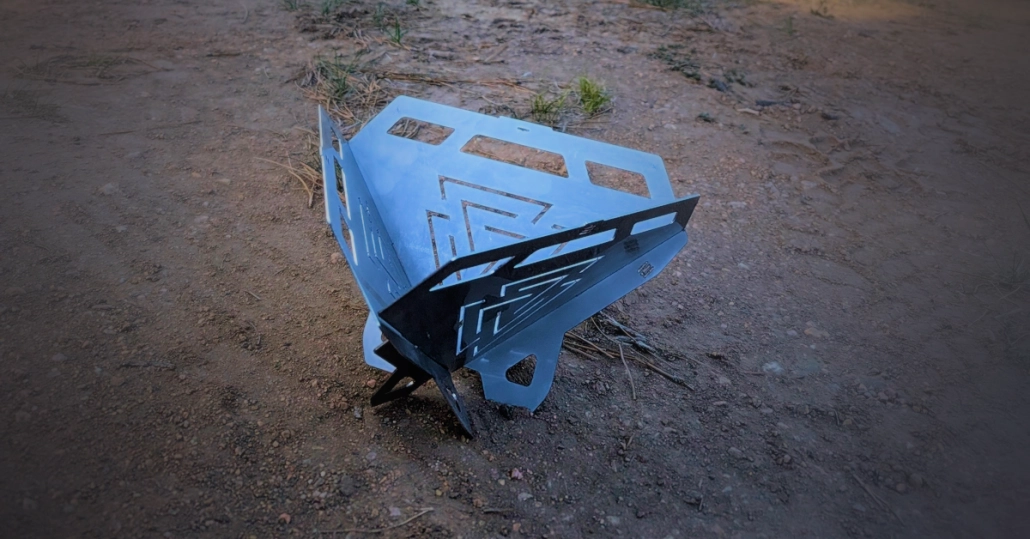
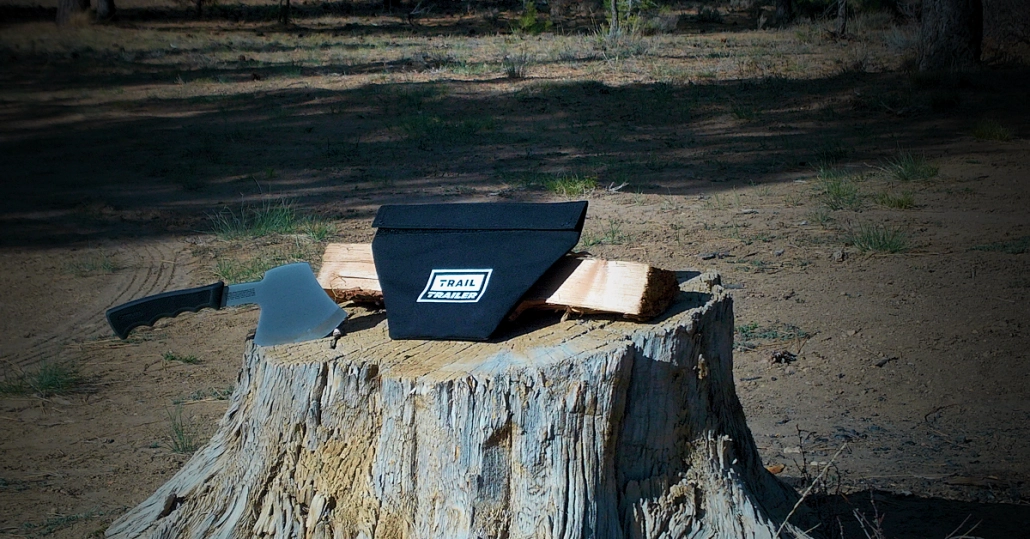
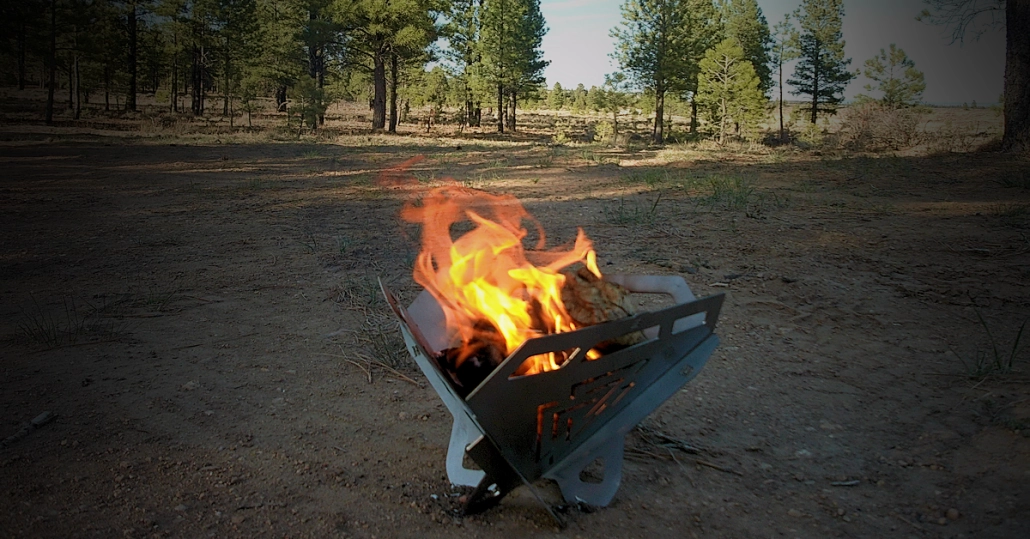


Leave a Reply
Want to join the discussion?Feel free to contribute!